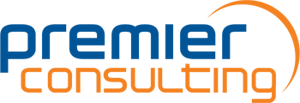Premier Consulting
3800 Paramount Parkway Suite 400
Morrisville, NC 27560 US
Morrisville, NC 27560 US

Company Overview
Premier Consulting is a strategic product development and global regulatory consulting company dedicated to helping biotech innovators transform their life-changing ideas and breakthrough science into new medical treatments. Our end-to-end solutions in strategy, regulatory, nonclinical, CMC, quality, and commercial help sponsors build and execute development plans that meet regulatory requirements and deliver results for sponsors and the patients they serve.
